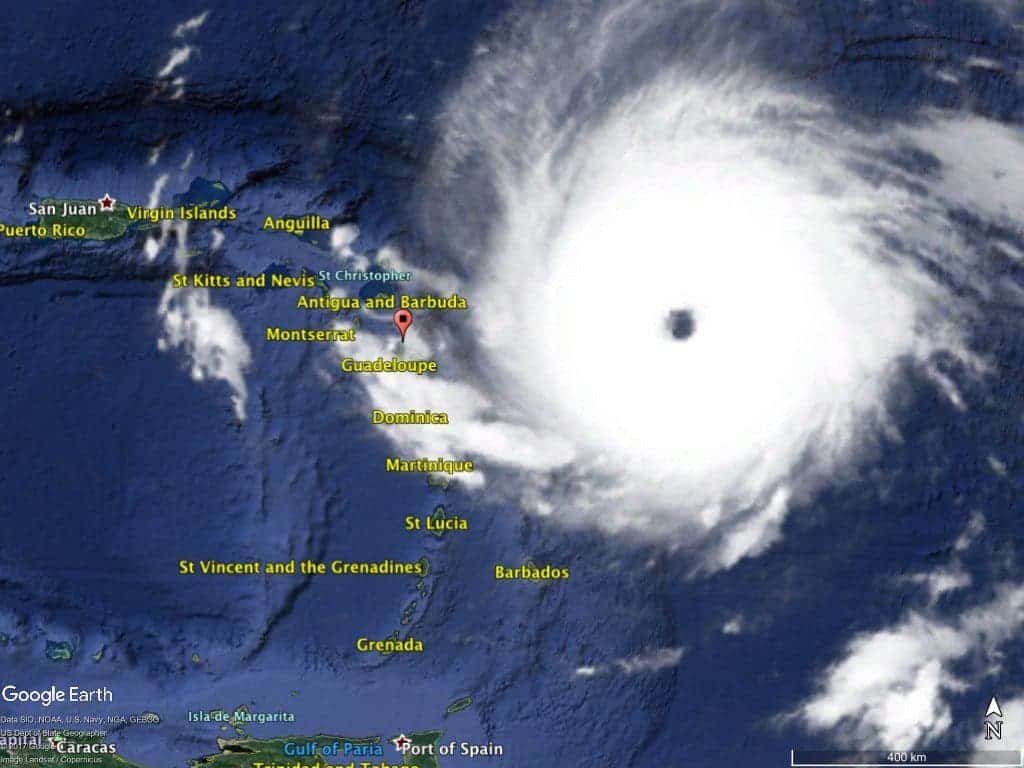Hurricane Irma has picked up so much speed that we’re seeing it on seismometers — sensors designed to detect measure earthquakes.

Seismometers in the Caribbean are picking up noise from Irma. Image credits: Stephen Hicks via Google Earth.
Hurricane Irma is already reaching biblical proportions. With sustained winds of 185 miles per hour, it’s already the strongest recorded hurricane in the Atlantic, and has plenty of room to grow even more as it nears the warmer waters of Florida Keys.
Stephen Hicks, a seismologist at the National Oceanography Centre Southampton, said the earthquake is already “visible” on the seismometers from Guadeloupe, an insular region of the Leeward Islands, part of the Lesser Antilles in the Caribbean
“What we’re seeing in the seismogram are low-pitched hums that gradually become stronger as the hurricane gets closer to the seismometer on the island of Guadeloupe,” said Stephen Hicks.

The seismic noise is so strong it can be hard to see small earthquakes. Image credits: Stephen HIcks.
This doesn’t mean that the hurricane itself is causing earthquakes — no such thing. But the winds and their effect on trees are being registered as noise on seismograms, it’s that strong. As the trees sway to the ground, they transmit energy, which can be regarded as teeny tiny earthquakes (seismic noise). Of course, you need to pass a lot of energy to the ground in order to get picked up by seismic sensors, which are generally designed to analyze significant temblors.
The stronger waves crashing onto the coast might also be accentuating the effect.
“Earthquakes occur tens of (miles) deep inside Earth’s crust, a long way from the influence of weather events, and there is no evidence to suggest that hurricanes and storms directly cause earthquakes,” Hicks added just to be sure.
It’s not uncommon for very strong hurricanes to be recorded on seismometers. Hurricane Harvey also registered on seismographs near Houston. When dealing with such a powerful storm, it can even be difficult to see smaller earthquakes due to all the noise.
It’s uncommon for two hurricanes to strike the US one after the other. Harvey killed over 60 people (the number is expected to rise significantly as the dust settles) and caused material damage of over $80 billion. Irma might be even worse.
The “extremely dangerous” Category 5 will strike the northeastern Leeward Islands and potentially head up to the Dominican Republic, Haiti, Cuba and the southeastern Bahamas, before ultimately moving on to Florida. There is still uncertainty about the hurricane’s trajectory, but people have been warned to prepare for the worst. With
“The hurricane force winds in Irma are wider than Florida,” tweeted Bryan Norcross, hurricane specialist at the Weather Channel. “You won’t need a direct hit to get Wilma-type winds & storm surge on both coasts.”
To keep an eye on Irma, you can follow:
- NOAA’s national hurricane center. Page updates every few hours.
- The Miami and Florida Keys National Weather Service branches. It’s Twitter, so it should update regularly.
- A Twitter feed of weather experts.
- Reputable news sources. Google News is a reliable aggregator.









